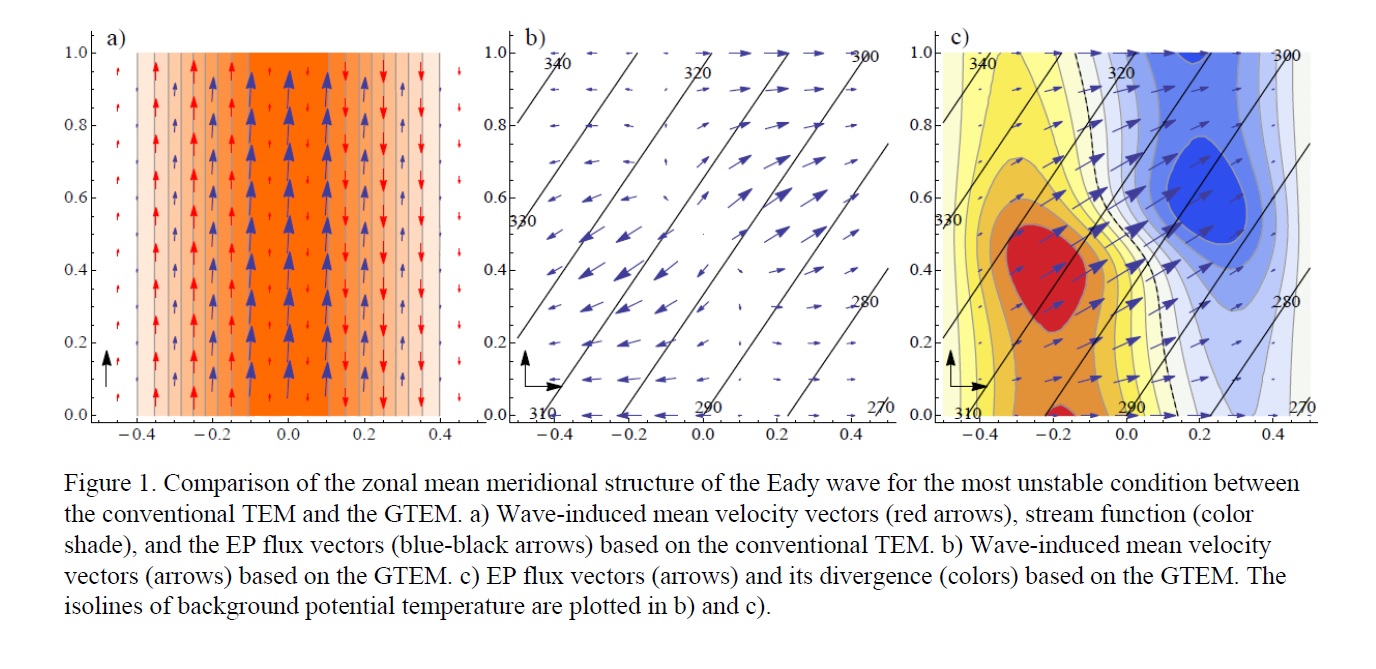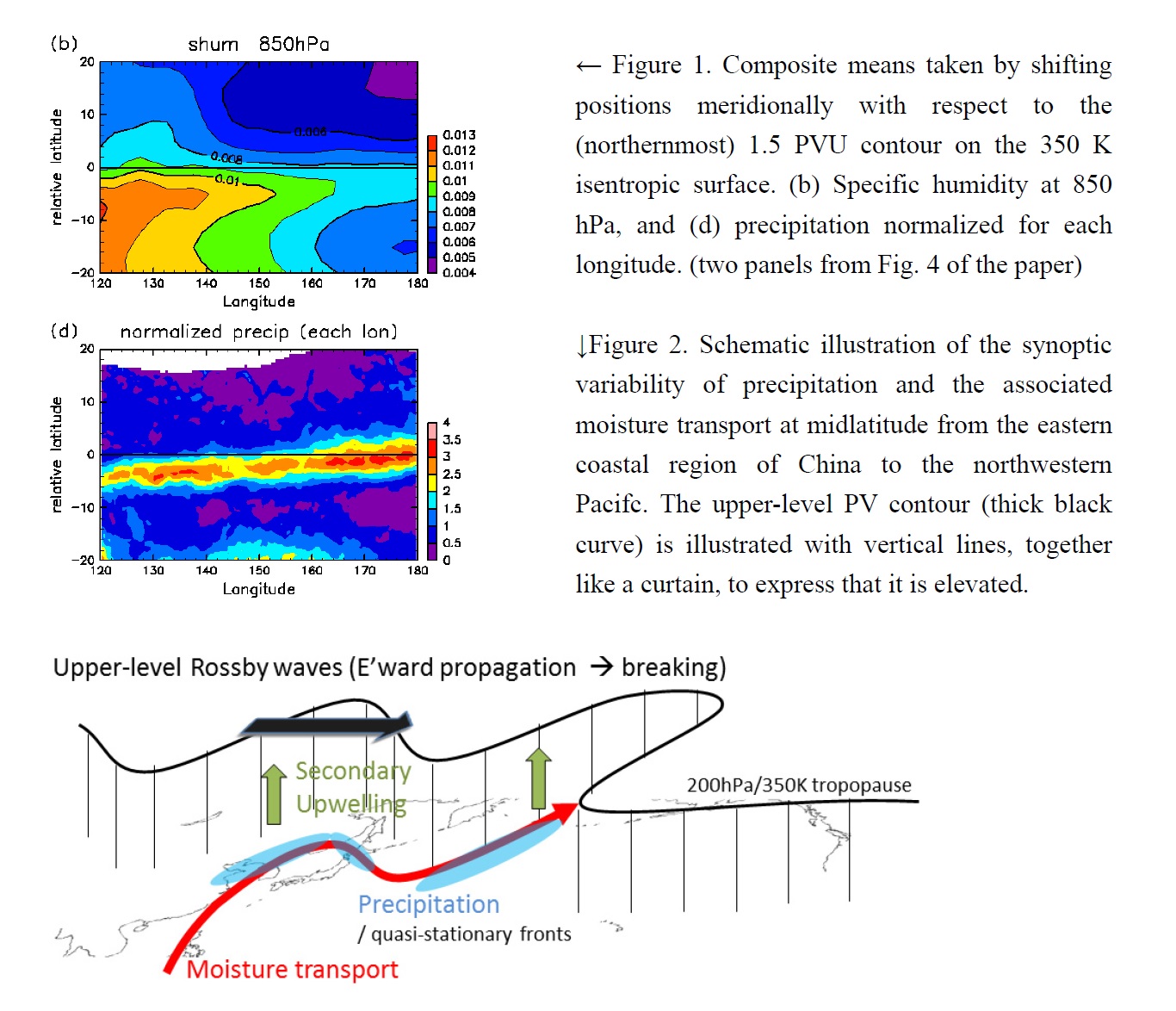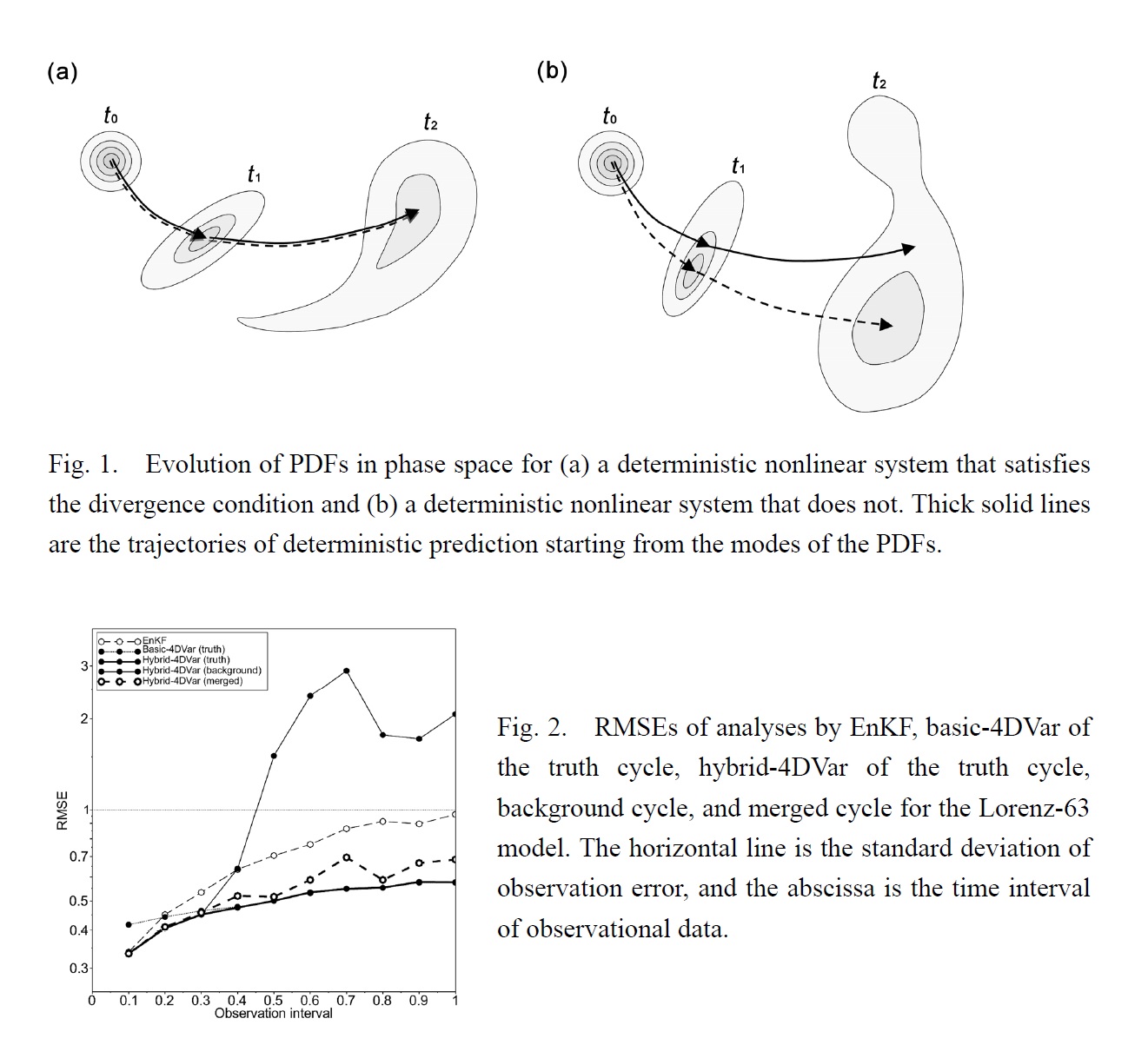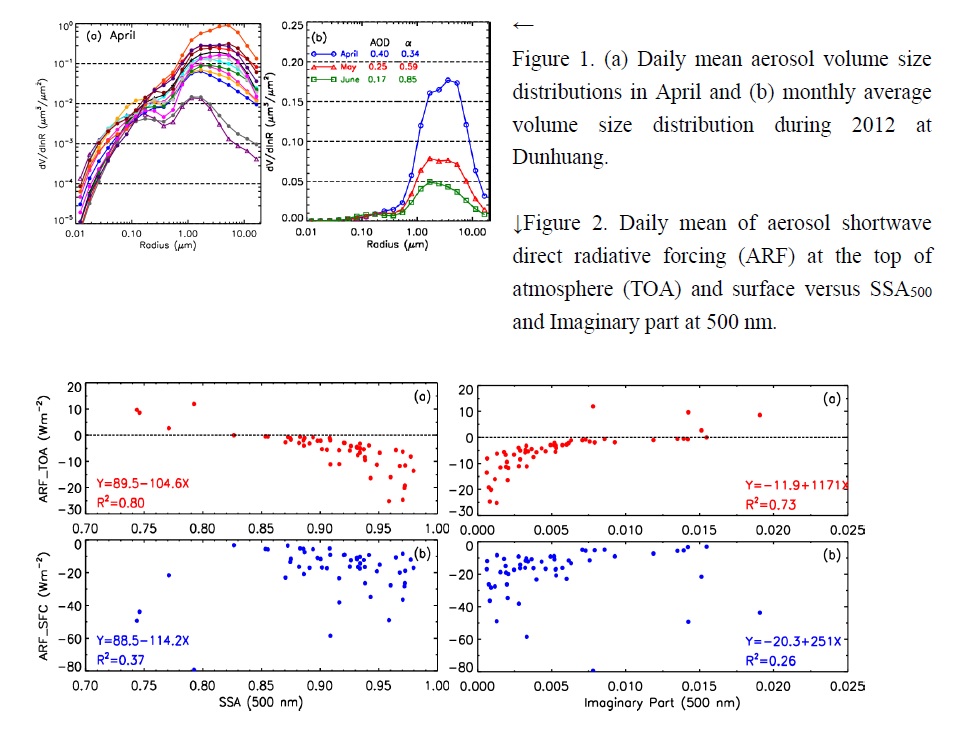JMSJ Awards
JMSJ Awards in 2014
In 2014, the following four papers were awarded. JMSJ Award 2014
Noda (2014)
Noda, A., 2014: Generalized transformed Eulerian mean (GTEM) description for Boussinesq fluids. J. Meteor. Soc. Japan, 92, 411-431.
https://doi.org/10.2151/jmsj.2014-501
Graphical Abstract
Highlights:
- A generalized transformed Eulerian mean (GTEM) set of equations is derived based on a nonneutral (unstable/dissipative) wave under dissipation and/or diabatic heating conditions in a Boussinesq stratified fluid.
- The key quantity that characterizes the GTEM is the eddy diffusion tensor. The conventional transformed Eulerian means (TEMs) are shown to be based on simplified forms of the antisymmetric components of the eddy diffusion tensor in the framework of the GTEM. The full components are derived based on the waveform. However, the explicit form of the wave frequency and wavenumber of eddies is not referred to so as to apply the GTEM to actual atmospheric and oceanic data analyses.
- The wave-induced transport velocity, which is defined as the divergence of the eddy diffusion tensor, is nondivergent by definition for that originated from the antisymmetric components, but divergent in general for that originated from the symmetric components. The focal mechanism that induces the difference and the Lagrangian mean motion, i.e., the Stokes drift defined in the generalized Lagrangian mean (GLM), is illustrated by figures.
- The Eliassen-Palm flux is originally defined in terms of the covariance of velocity and pressure perturbations and has a clear physical meaning of the wave momentum transport via group velocity for the waves that satisfy appropriate conditions in the GTEM formulation. However, it can be calculated as the residual of the Reynolds stress minus other terms relevant to the eddy diffusion tensor.
- An application to the Eady unstable wave is made to illustrate the differences between TEM, GLM, and GTEM, and the importance of the symmetric part of the eddy diffusion tensor (Fig. 1).
Horinouchi (2014)
Horinouchi, T., 2014: Influence of upper tropospheric disturbances on the synoptic variability of precipitation and moisture transport over summertime East Asia and the northwestern Pacific. J. Meteor. Soc. Japan, 92, 519-541.
https://doi.org/10.2151/jmsj.2014-602
Graphical Abstract
Highlights:
- By using satellite precipitation and reanalysis data, a clear relationship is found between upper tropospheric isentropic potential vorticity (PV) disturbances, surface precipitation, and lower tropospheric humidity through July and August from the eastern coastal region of China to the northwestern Pacific (Fig. 1); a precipitation band of several hundred kilometers wide and a thousand to several thousand kilometers long is formed frequently on the equatorward and low-PV side of the northernmost 1.5 PVU contours at 350 K (∼ 200 hPa).
- A thorough analysis reveals that this vertical association is due the downward forcing from the upper tropospheric Rossby waves; they exert positive forcing to low-level potential enstrophy, induce secondary circulation to initiate precipitation, and affect low-level moisture transport (Fig. 2).
- This study proposes a novel way to diagnose vertical interaction based on the quasi-geostrophic (QG) potential enstrophy defined using the QG PV in which boundary contributions are incorporated.
Tsuyuki (2014)
Tsuyuki, T., 2014: Deterministic predictability of the most probable state and reformulation of variational data assimilation. J. Meteor. Soc. Japan, 92, 599-622.
https://doi.org/10.2151/jmsj.2014-606
Graphical Abstract
Highlights:
- Conditions for the forecast state starting from the mode of a PDF of the state variables to remain sufficiently close to the mode of the PDF at forecast time are derived under assumption of a small forecast error.
- A new formulation of 4DVar is presented, which reveals that a non-Gaussian prior PDF which evolves according to the Liouville equation is implicitly used in 4DVar.
- Results from data assimilation experiments with toy models demonstrate that 4DVar cycles with some modifications outperform EnKF cycles in terms of the accuracy of analysis in strong nonlinearity as well as in weak nonlinearity.
Bi et al. (2014)
Bi, J., J. Shi, Y. Xie, Y. Liu, T. Takamura, and P. Khatri, 2014: Dust aerosol characteristics and shortwave radiative impact at a Gobi Desert of northwest China during the spring of 2012. J. Meteor. Soc. Japan, 92A, 33-56.
https://doi.org/10.2151/jmsj.2014-A03
Graphical Abstract
Highlights:
- High aerosol loading and predominantly coarse particulates were observed in Dunhuang during the spring of 2012 ascribed to the influence of prevalent dust storm (Fig. 1).
- The single scattering albedo at 500 nm (SSA500) varied from 0.91 to 0.97 on dusty days and increased with the increase of aerosol optical depth, indicating that the dust aerosols sourced from northwest China were not strongly absorbing.
- The daily mean aerosol shortwave direct radiative forcing (ARF) were largely negative at the surface (-79.4 to -3.2 W m-2) and moderately positive in the atmosphere (2.2 to 25.1 W m-2), which represents a strong cooling at the surface and moderate warming in the atmosphere. The ARF at TOA was positive value when SSA500 is less than 0.85 or the imaginary part at 500 nm was larger than 0.015 (Fig. 2).










